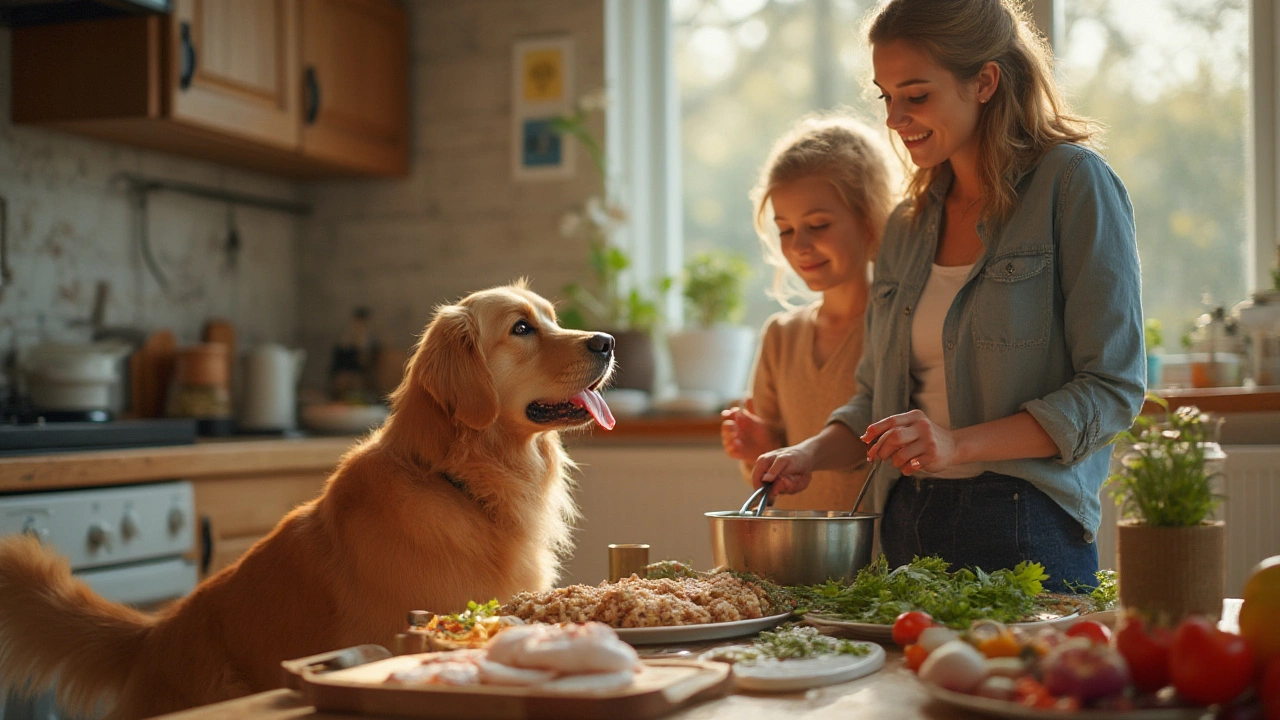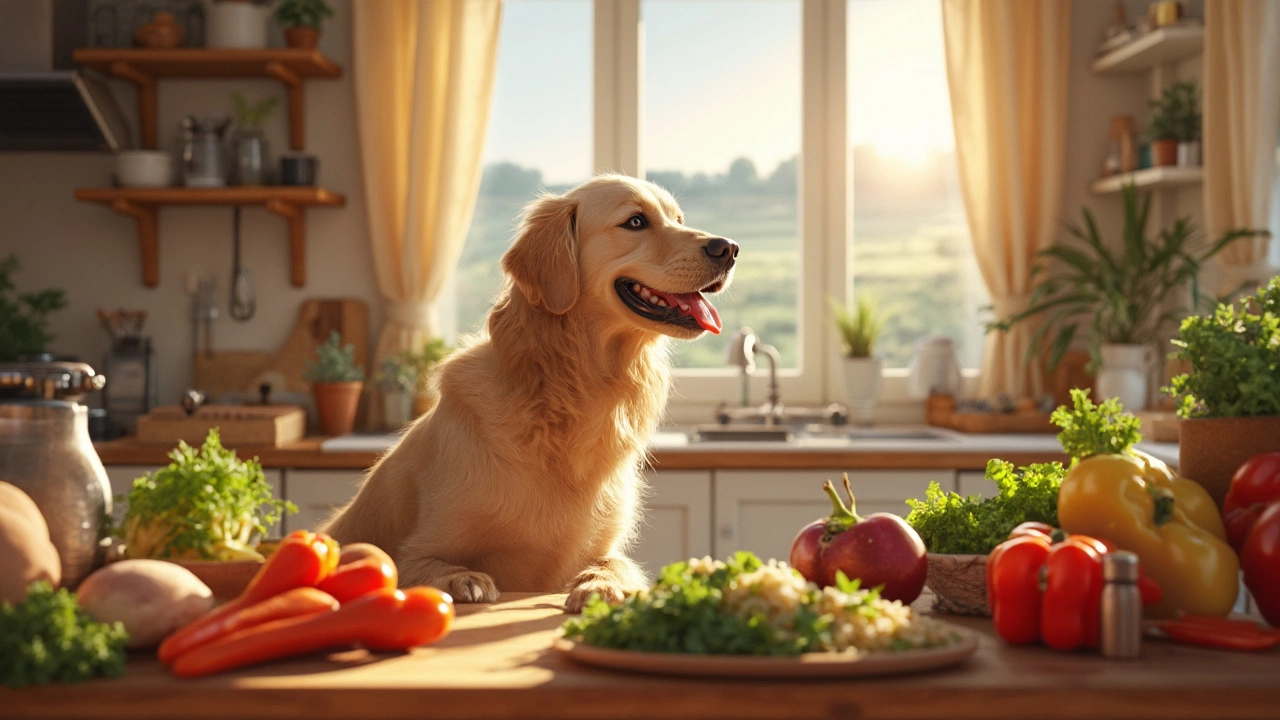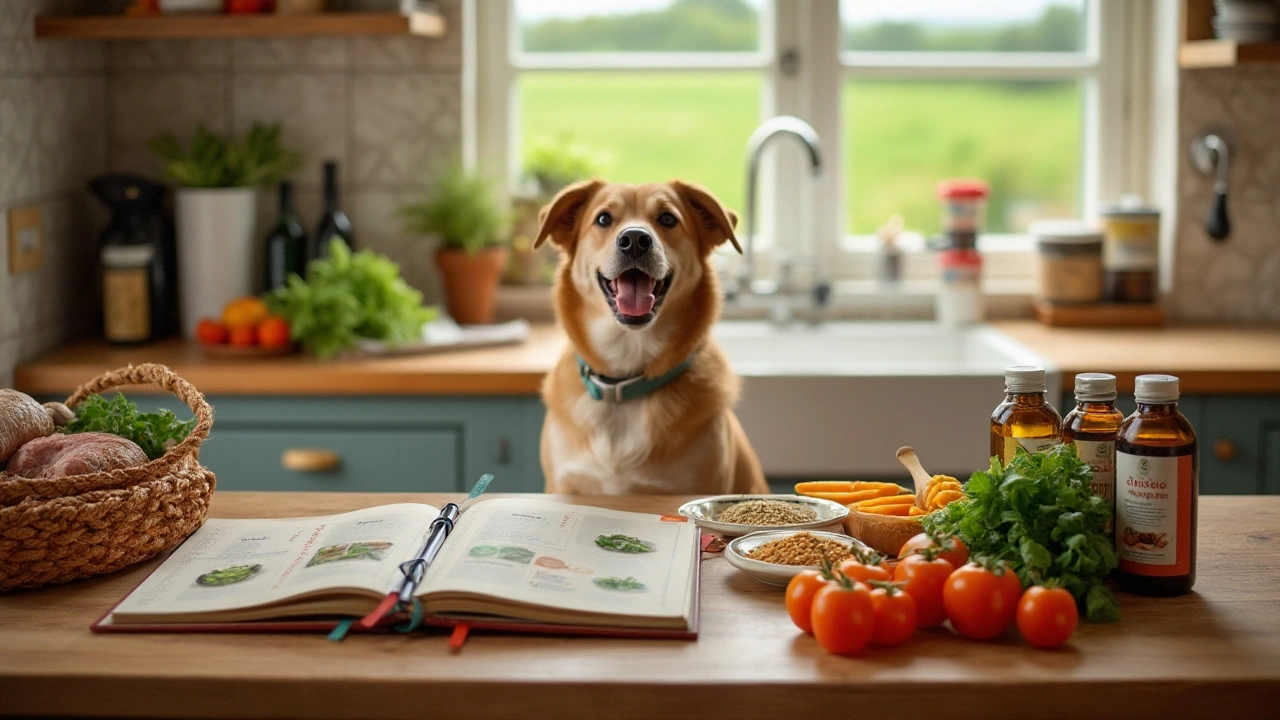Homemade Dog Food Made Simple
Thinking about swapping store‑bought kibble for a bowl you make yourself? You’re not alone. Many dog owners want to know exactly what’s in their pet’s plate, and homemade meals can give you that control. Let’s break down the basics so you can start feeding your dog fresh, safe food without a nutrition degree.
What to Include for a Balanced Meal
A good homemade diet needs protein, carbs, veggies, and a bit of fat. Protein can come from lean chicken, turkey, beef, or even eggs. Cook it thoroughly to kill any germs. For carbs, think rice, sweet potato, or oatmeal – these give steady energy and are easy on the stomach.
Veggies add fiber and vitamins. Dogs love carrots, green beans, peas, and pumpkin. Steam or boil them until soft, then mash or chop small. A teaspoon of olive oil or a dab of fish oil adds essential fatty acids for a shiny coat.
Don’t forget calcium. Ground bone meal, calcium powder, or plain yogurt can cover that need. Too much calcium can cause problems, so stick to the recommended amount (about 1 % of the total meal weight).
Safety First: Ingredients to Avoid
Some human foods are toxic to dogs. No grapes, raisins, onions, garlic, or chocolate ever. Avocado skins and pits, macadamia nuts, and anything with xylitol (a sweetener in gum) are also off‑limits. Keep these out of your pantry and your dog’s bowl.
Raw meat can carry salmonella or E. coli, so if you go raw you need a vet‑approved plan. For most owners, cooking the meat is the easiest way to stay safe. Also, avoid added salt, spices, or heavy sauces – a dog’s palate doesn’t need them.
When you’re trying a new ingredient, start with a tiny portion and watch for digestive upset. If your dog vomits or has diarrhea, stop that food and consult your vet.
Now that you know the building blocks, here’s a quick starter recipe you can have on the table in under an hour.
Easy Chicken & Rice Bowl
- 1 cup cooked white rice
- 200 g ground chicken (no skin)
- ½ cup finely chopped carrots
- ¼ cup peas (fresh or frozen)
- 1 tsp olive oil
- A pinch of calcium powder (optional)
Cook the chicken in a non‑stick pan until fully done. Add carrots and peas, steam until soft, then mix with rice and oil. Let it cool to room temperature before serving. This recipe hits protein, carbs, veg, and a dash of healthy fat in one bowl.
Store leftovers in airtight containers in the fridge for up to three days. For longer storage, freeze portions in zip‑top bags; they thaw quickly in the microwave or a warm water bath.
Portion size depends on your dog’s size, age, and activity level. A general rule is about 2% of their body weight per day, split into two meals. Adjust up or down based on weight changes.
Finally, keep a vet in the loop. Even a well‑balanced home‑cooked diet benefits from a professional’s eyes, especially if you have a senior dog or one with health issues.
Homemade dog food doesn’t have to be a chore. With a few staples in your pantry and a simple recipe, you can give your pup tasty, nutritious meals that you feel good about. Start small, stay safe, and watch your dog enjoy every bite.

Is Ground Chicken Safe and Healthy for Dogs? A Complete Owner's Guide
Wondering if ground chicken suits your dog’s diet? Discover benefits, risks, cooking tips, and expert advice in this super detailed guide packed with facts you need.
View more
Best Homemade Dog Food: What to Feed Your Pup Safely
Thinking about making your dog's meals at home? This article breaks down what homemade food really works best for dogs, which ingredients you should use or avoid, and how to make sure your pup is getting all the nutrients they need. Get easy, practical recipes and pro tips to keep your dog healthy. Learn what vets usually recommend and get answers to common questions real dog owners have. Skip the guesswork and help your furry friend thrive with every meal.
View more
Essential Supplements to Boost Your Homemade Dog Food
Crafting balanced meals at home for your dog can be rewarding and beneficial to their health. However, ensuring that these meals provide all the necessary nutrients is crucial. This article explores key supplements to consider adding to homemade dog food to promote optimal health and remedy any potential nutrient gaps. By understanding these additions, you can create a nutrient-rich diet that supports your pet's well-being.
View more